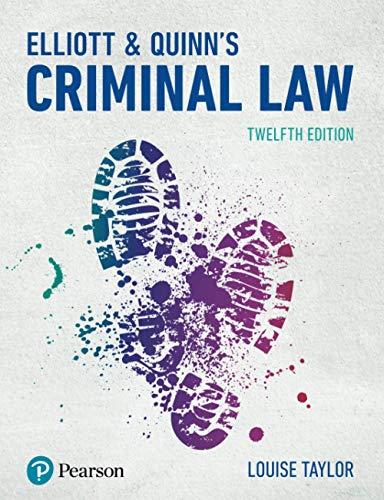Question
Heber Burke and his wife Evelyn spent most of their lives in Ohio and jointly accumulated a substantial amount of property there. When Evelyn died
Heber Burke and his wife Evelyn spent most of their lives in Ohio and jointly accumulated a substantial amount of property there. When Evelyn died in February 1985, the Burkes had been married for fifty-three years and had two children, four grandchildren, and four great-grandchildren. Heber had originally hailed from Pike County, Kentucky, and in June 1985, he returned to Pike County and bought a house there. In the same month, he told his children that he was going to marry Lexie Damron, a widow who attended his church. Lexie and Heber were married on July 20. On July 27, Heber executed a will, which was drawn up by Lexie's attorney, in which he left all of his property to Lexie. Heber died three weeks later. Heber's children, Donald Burke and Beatrice Bates, contested the will, alleging that Heber had lacked testamentary capacity and that Heber's will had resulted from Lexie's undue influence over him. Friends and relatives of Heber in Pike County testified that they had never known Heber to drink and that, although he seemed saddened by his first wife's death, he was not incapacitated by it. According to the children's witnesses, however, after Evelyn's death, Heber allegedly drank heavily and constantly; had frequent crying spells; repeatedly visited his wife's grave; tried to dig her up so that he could talk to her; and had hallucinations, talking to people who were not present and claiming that Evelyn visited him regularly at night, which frightened him into sleeping in the attic. The jury found the will to be invalid on the grounds of undue influence, and Lexie appealed.
1.The appellate court had to weigh two conflicting policies in deciding this issue.What two policies are in conflict here, and what criteria should be used in resolving the issue?
Step by Step Solution
There are 3 Steps involved in it
Step: 1

Get Instant Access to Expert-Tailored Solutions
See step-by-step solutions with expert insights and AI powered tools for academic success
Step: 2

Step: 3

Ace Your Homework with AI
Get the answers you need in no time with our AI-driven, step-by-step assistance
Get Started


